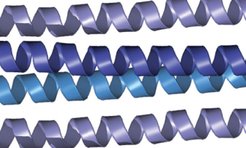Transmembrane Signal Transduction
Murray Coles
Our group concentrates on protein structure determination, with a special focus on proteins involved in transmembrane signaling.
Objective

Of central interest to our work is the HAMP domain, a widespread element in prokaryotic receptors that sense the extracellular environment. Such receptors typically couple sensory input in an extracellular sensor domain to regulate an intracellular effector module.
As the sensor and effector are separated by the cell membrane, the regulation must occur by internal conformational changes in the segments linking them. The HAMP domain is frequently encountered in these linking segments – often as the first domain - and must play a crucial role in signal transduction.
Despite ongoing research over the last decades, the distinct mechanisms of transmembrane signaling are not yet understood. Our research on an archaeal HAMP domain, Af1503, revealed conformational changes underlying the signaling process [1] and has shown how these changes are interpreted to modulate the activity of a downstream histidine kinase effector module [2, 3].
New methods and findings
For the structure determination of HAMP domains and other proteins we work with Nuclear Magnetic Resonance (NMR) spectroscopy. NMR spectroscopy is a powerful tool for examining the structure, dynamics and interactions of biological macromolecules. As the proteins are observed in solution, it is an ideal technique for studying transmembrane receptors, where subtle conformational and dynamic changes are involved in signaling from extra- to intracellular domains [1]. For a better understanding of transmembrane signaling, we are undertaking structural analysis of full-length membrane-bound proteins.
Our group also has numerous internal (e.g. [4]) and external collaborations (e.g. [5, 6]) and has solved more than 20 protein solution structures. Besides we collaborate to develop methods for NMR measurement and spectral analysis [7]. The latter has resulted in novel methods for protein structure determination based on back-calculation of expectation NOESY spectra, which are the key source of NMR structural information.
